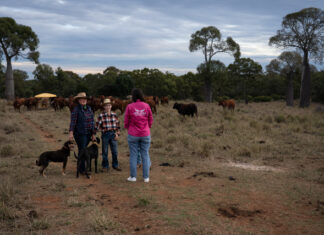When it comes to growing Australia’s agricultural sector in an increasingly digitalised world, connectivity is key.
Our farmers are on track to have their most valuable year yet, with agricultural production expected to hit a record $90 billion this financial year.
It’s an impressive figure, one that’s expected to grow to $100 billion by 2030. However, connectivity issues are casting a cloud over this forecast.
As many industry bodies have flagged, the reality is many farmers have only limited connectivity, which prevents them from adopting technologies that can drive substantial gains in productivity and profitability.
In Queensland, for example, internet speeds in urban areas are typically fast and reliable, while connectivity in remote and regional parts of the state is often much slower and much less reliable.
To improve the situation, several initiatives have been introduced, such as the Mobile Black Spot Program, focused on providing mobile phone coverage to places that have little or none, and the National Broadband Network’s Sky Muster satellite service, which delivers the NBN network across regional and remote Australia.
5G networks, which will be rolled out to more cities and regional areas over the next few years, are also expected to increase farmers’ access to faster and more reliable internet.
The importance of farmers being connected cannot be understated. The adoption of digital technologies on-farm, which requires reliable and fast internet, can create a raft of benefits including supply chain improvements, cost and time savings, improved precision, business growth and improved sustainability.
For example, a reliable internet connection is needed to power AI technologies analysing large volumes of data that can predict the best time for seed planting to achieve optimal yields.
The consequences of not being connected are huge. It robs farmers of access to digital technologies that can help tackle rising production costs and operational changes required due to climate change. There’s also the risk our agricultural sector will become less competitive internationally, not to mention the possibility the costs of food and fibre will rise, hurting consumers and the economy.
There’s a lot at stake. That’s why connectivity is a major focus of the Agtech and Logistics Hub.
The Hub has been a game-changer for many farmers, bringing them connectivity solutions tailored to their operations.
We know everyone can be connected. The challenge is to understand why farmers want and need to be connected, and what role connectivity solutions will play in their operations.
The Hub presents verified solutions, ensuring they are tailored to each farmers’ specific needs.
So far, our team has connected more than 1300 sites, including farms, agricultural businesses and communities.
This has meant farmers have been able to access a range of previously unavailable services, such as weather forecasting and remote monitoring of crops and livestock.
Importantly, the Hub has also helped farmers connect with one another so they can share knowledge and collaborate.
We are excited by the Queensland Government’s upcoming Agtech Roadmap, which will outline a path for the adoption of innovative agricultural technologies.
This roadmap will have a major focus on remote and regional productivity, with strategies to improve access to fast and reliable internet, including investment in infrastructure and the development of new solutions.
We are looking forward to working with the Queensland Government as it rolls out the agtech roadmap and implements connectivity solutions across the state.
*** Thomas Hall is the Director of the Agtech and Logistics Hub, Australia’s home of digital
agriculture.







